Our Conservation Efforts
MetroParks' Conservation Objectives
Our objectives include:
- Protect drinking water sources
- Preserve and protect watersheds
- Preserve wildlife habitat
- Protect important birding areas
- Protect plant and animal diversity
- Conservation education
MetroParks Natural Resources
About MetroParks Conservation
No less than 80% of MetroParks’ properties are to be managed in a mostly natural undeveloped state. 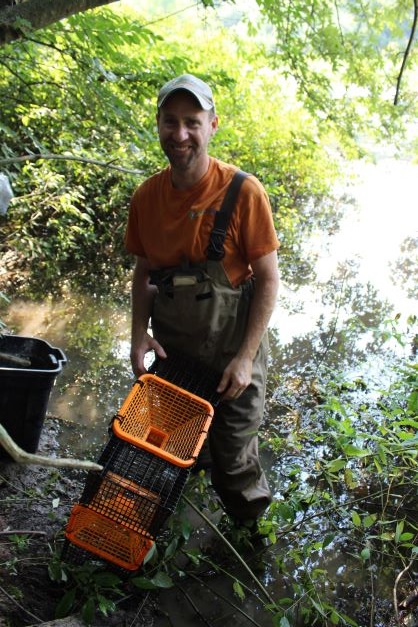 Conservation management of specific areas to preserve diverse natural habitats within Butler County requires constant work. MetroParks has comprehensive conservation management goals, which are reflected in MetroParks master plans.
Conservation management of specific areas to preserve diverse natural habitats within Butler County requires constant work. MetroParks has comprehensive conservation management goals, which are reflected in MetroParks master plans.
Additional management objectives include planting native grasses, wildflowers and trees that will support and nurture the areas by maintaining the growth of plant life at an optimal height for indigenous wildlife. Throughout MetroParks, you will often see "Conservation Underway" signage which indicates that conservation work is being undertaken in a particular area.
Common threats to MetroParks natural resources, and some common MetroParks conservation management techniques are listed below.
Controlled Bowhunting Program
To help manage the increasing population of white-tailed deer on park property, MetroParks of Butler County offers a controlled bowhunting program annually. The bowhunting program targets specific areas within the parks where ecological damage to forests or crop production has been caused by white-tailed deer overgrazing.
Applications are open August 1 -31, 2025 for the 2025-2026 Controlled Bowhunting Program. Click here for more information and to apply.
Invasive Plant Threats
Invasive plants are non-native species that have spread into native or minimally managed plant systems. These plants cause harm by developing self-sustaining populations that dominate and/or disrupt native ecosystems. They threaten wildlife habitats, important birding areas, and overall plant and animal diversity.
There are various categories of Invasive Plants.
- Invasive: (a non-indigenous plant with the biologic potential for rapid and widespread dispersion and establishment in minimally managed habitats)
- Likely Invasive: (a non-native species that is naturalized in Ohio but not yet widespread)
- Potentially Invasive: (a non-native species not currently known to exist in Ohio, but expected to become invasive in the future).
Ongoing Efforts to Control Invasive Plant Species
The best method of control is prevention. Preventing intentional spread through horticulture, and removing or killing invasive plants when they are first spotted, can avoid significant problems later. Control methods include:
- Prescribed Fires
- Hand-Pulling
- Herbicides - Selected Herbicides are occasionally and selectively applied by certified employees or contractors.
- Mechanical Equipment
Prescribed Fires
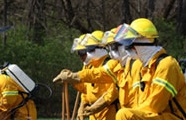 | 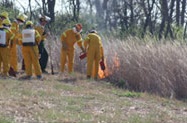 | 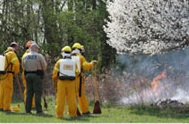 |
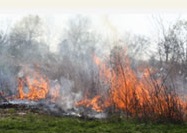 | 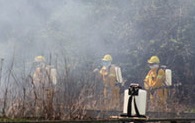 | 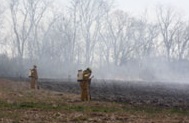 |
Ohio was once covered by about 10% grasslands which provided much needed nesting, foraging and escape cover for many species.
Habitat management and conservation ensures that these natural areas provide food, water and shelter for all wildlife. One habitat management practice is the use of prescribed fires to help maintain these grasslands by burning off woody growth, invasive species and old thatch. Also, many of the grasses and forbs require heat in order for the seeds to germinate and this ensures the high quality of this ecosystem.
A Certified Prescribed Fire Manager oversees the prescribed fires for MetroParks and is assisted by trained park staff, volunteers and often the local Fire Department.
Mechanical Equipment
Mechanical equipment, such as a skidsteer with Forestry attachment, is used to grind the above ground species. (Please Note: This equipment is often mistaken for excavation and building equipment and may leave the landscape temporarily looking barren, until the new wanted growth has time to re-appear.) When you see an area like this appear with "Conservation Work Underway" sign you will know that this is an active conservation project and not construction efforts.
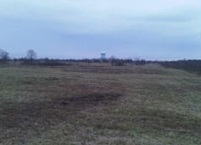 | 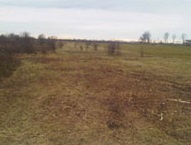 |  |
Create Family fun
MetroParks provides opportunities to experience open green spaces near home. Pick the time of day that fits your busy schedule to spend some time with nature. Hike a trail, wander through natural habitats, view wildlife or just play! Please consider donating to further MetroParks ability to provide these resources.
